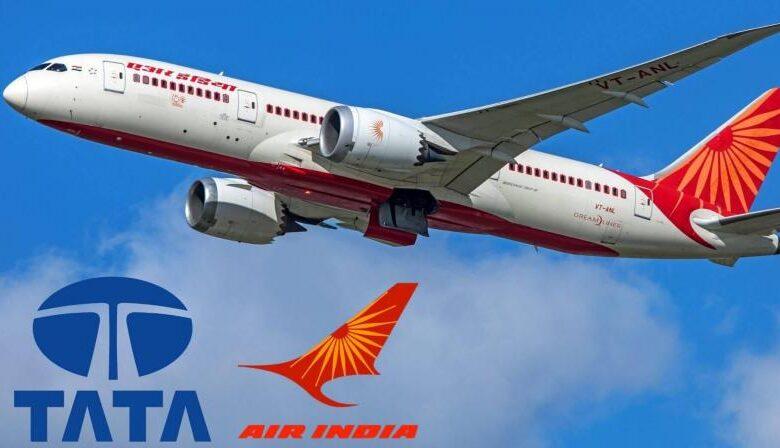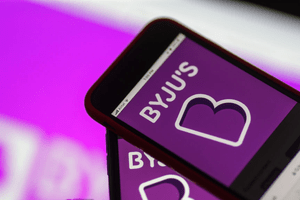
After a wait of almost 68 years, the Tata Group has finally won the bid to take back the reins of state-owned Air India. The government decided to sell 100 per cent stake in Air India, which had a total debt of Rs. 61,562 crore as of August 31.
The conglomerate, which outbid consortia led by SpiceJet founder Ajay Singh, emerged as the front-runner on the reserve price fixed by a panel of government secretaries. The loss-making airline will be finally sold to one of India’s biggest business houses with deep financial power, after several attempts in the last two decades.
“Talace Pvt Ltd of Tata Sons is the winning bidder at Rs 18,000 crore. The transaction is expected to close by the end of December 2021,” Secretary, DIPAM, Tuhin Kanta Pandey, said at a press briefing in New Delhi. He said: “7 expressions of interest (EOI) were received by December 2020. Five disqualified because they didn’t meet eligibility requirements.”
Pandey said around Rs. 46,262 crore debt of the state-owned airline will be transferred to Air India Assets Holding Limited (AIAHL), while 15 percent of the total debt of Rs 61,562 crore will be retained by Tatas. After its sale, the government will get around Rs 2,700 crore cash from Tatas, the DIPAM Secretary said, adding that Tatas will take over Rs 15,300 crore debt.
Tata’s will have to maintain a 51 per cent ownership as per the share purchase agreement, said Pandey. After the formal announcement, Ratan Tata, Chairman Emeritus, Tata Sons, expressed his happiness at Tatas winning the bid, saying: “Welcome back, Air India.” “The Tata group winning the bid for Air India is great news! While admittedly it will take considerable effort to rebuild Air India, it will hopefully provide a very strong market opportunity to the Tata group’s presence in the aviation industry,” he said.
The government had tried to auction its majority stake almost three years ago too, but it drew no bids, forcing the government to ease the terms. With the arrival of the Covid-19 pandemic, the government also ended up extending the deadline for bids many times.
The final Air India sale process started early last year and now has finally come to its fruition. With this, there’s now a fresh revival hope for the airline, which has been making losses every year since its merger with Indian Airlines in 2007.
How Tata’s founded the airline
The history of the airline is older than that of independent India and goes back to 1932 when JRD Tata, the first Indian to earn a pilot’s licence, decided to start an airmail service between Karachi and Bombay. He would soon expand services and, after World War II, launch passenger operations in 1948.
Even after the Indian government decided to nationalise the airline in 1953, JRD Tata remained at its helm, discharging a labour of love and ensuring the airline continued to give the best international carriers a run for their money. He would eventually be pushed out in 1978 due to differences with the Morarji Desai-led Janata Party government, though Indira Gandhi would later bring back, putting him on the Air India board.
Experts say that its present problems can be traced back to 2007, when the then UPA government effected a merger of Air India and Indian Airlines and placed a huge order for aircraft, which saw the airline’s debt swell to tens of thousands of crores. By then, the domestic aviation sector had undergone a transformation but Air India could not capitalise on the opportunity and saw the likes of Jet, IndiGo and other new entrants capture plum shares of the Indian aviation pie.
Creating a cultural trend across the globe
At a time when the world was far less connected than it is now, Air India gave wings to India’s global aspirations and proved to be an iconic ambassador for the country’s culture. It opened offices in prime locations across the major capitals and built its brand on Indian art and aesthetics to woo foreign patrons. In the process, it also came to become one of the biggest collectors of Indian art. Works by MF Hussain, VS Gaitonde, Anjolie Ela Menon, to name just a few, are still a part of its enviable inventory.
Its efforts to create a unique brand saw Air India executives also convince Salvador Dali to design an ashtray, about 250 pieces of which were given as a gift to its first-class flyers. Such was the lengths to which the airline was permitted to go that a baby elephant, reportedly with a mahout in tow, was dispatched to Spain at the painter’s request. The pachyderm is said to have ended up eventually at a zoo.
But nothing captures the emotional connect Air India holds for entire generations of Indians than the ‘Maharajah’ mascot. Conceived by Bobby Kooka, Air India’s Commercial Director and created in collaboration with artist Umesh Rao, the Maharajah made his first appearance in 1946. He soon came to symbolise Indian hospitality, taking “Air India’s sales and promotional messages to millions of travellers across the world”.
The airline also has a few firsts and records to its name. In 2017, it said it had become the first airline to fly around the world with an all-woman crew. In 1990, it entered the Guinness World Record for the largest evacuation conducted by a civil airline, operating more than 450 flights in 59 days to airlift over 1 lakh Indians from Kuwait during the Iraq War.
Capturing the skies
The deal would make Tata Group the second-largest airline operator in the domestic market with a 26.7 per cent market share and behind the market leader IndiGo, with 57 per cent market share.
In the international segment though, Tata Group would emerge as the leader with the largest market share by a long shot. The Tatas already have two airlines in its kitty — Vistara and AirAsia. Even though they are facing losses, Tata as a conglomerate has unmatched financial competence.
Life has, indeed, come a full circle for the Tata Group with the ‘Maharajah’ in its kitty now!











